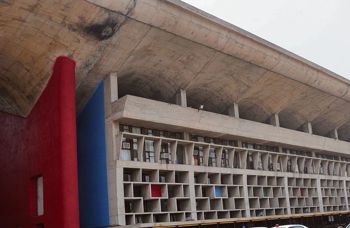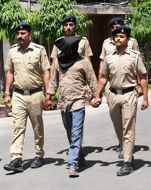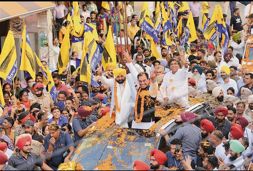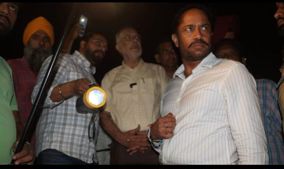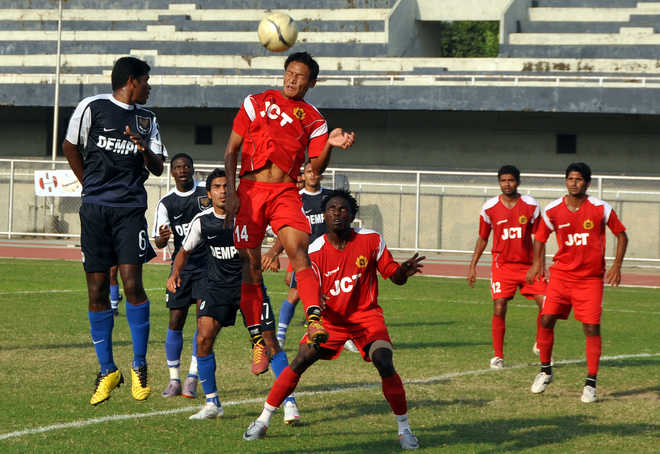
Knocked out: The declining fortunes of Indian football sounded the death knell for many of the premier football clubs like JCT. After 40 years, the club withdrew from competitive football in 2011
Rohit Mahajan
Satellite television has strangely divided the psyche of the young football fan of India. So, when a youngster says “this year we’re terrible in defence” or “we should not have signed Dembele”, he’s not talking about his own school or club team — “we” for him is Real Madrid or Barcelona. I’ve met a Shillong man who’d never stepped out of India but was willing to kill for the honour of Arsenal. TV has created a passionate NRE segment in India — the Non Resident European fan.
Indian football was once similarly popular among the masses. Novy Kapadia belongs to that fandom. This book is full of reminiscences of the writer as a football crazy teen of the 1960s, and tales from him as a sports journalist in later life. When his beloved grandmother died in December 1965, Mohun Bagan were to play in Delhi later in the day. His feelings were divided by torment — how could he miss watching Jarnail Singh or Chuni Goswami? When he came back from the same in the evening, he thought the priest would reprimand him for missing the prayer ceremony. Instead, the priest asked him: “What happened in Mohun Bagan’s match?”
For even those who follow Indian football closely, this would be a book of discovery. Who remembers that a man from Secunderabad, called Tulsidas Balaraman, “tormented” the great Hungarian team at the 1960 Olympic Games? As Kapadia relates it, “Balaraman tormented the Hungarian defence with his incredible speed and ball control. Following a Chuni Goswami pass, he scored the memorable reducer for India with a flick. In the closing minutes of the match, the desperate Hungarians were tugging at his shirt or body-checking him to break his flow.”
The writer himself wanted to play like Yousuf Khan, a midfielder from Hyderabad who was the “poor man’s Ruud Gullit”. “Long before total football was dreamt of, he exemplified this concept,” writes Kapadia. “He could play in any of the ten outfield positions.” Khan was part of the legendary Indian team of the 1960s and won the Asian Games gold in 1962.
Another legend of the 1962 win is Jarnail Singh Dhillon, “arguably the greatest defender India has ever produced”. In 1963, a newspaper organised a poll to find out who the most popular sportsperson in India was — it turned out to be Jarnail Singh, “ahead of tennis star Ramanathan Krishnan, athlete Milkha Singh, and famous cricketers Chandu Borde and Polly Umrigar”. Alas, even a tough, brave man such as Jarnail was broken by age and sorrow: In 1996, his son Jagmohan, a promising player, committed suicide, and this blow crushed Jarnail, who died in 2000.
Peter Thangaraj remains the finest goalkeeper India has produced. Another Secunderabad man, Thangaraj was also part of the Asian Games team of 1962. When a poll was organised to select the best goalkeeper of Asia in the 20th century, Thangaraj was fifth, though he had faded from public memory by then, having retired in 1972.
Such were the men who made Indian football great in the 1950s and 1960s, when they were among the best in Asia. With a bit more luck, and a sense of adventure, many of these stars could have played in Europe.
Football in Punjab is hugely popular, but before Partition, it was mostly confined to western Punjab. In the inaugural Santosh Trophy, the Punjab team, with the exception of Gurdeep Singh, consisted only of Muslims from west Punjab.
After Partition, the Punjab Football Association was formed in 1951, and “it took another decade for organised football to take root in the state”. One of the pioneers was Lala Dwarka Das Sehgal, who founded the Leaders Club Jalandhar in 1960. Punjab Police, whose first love was hockey, began to focus on football too in the 1960s. By the mid-1960s, these two clubs were strong enough to reach the final of the DCM Trophy. “Other teams from the state rose to prominence, of which BSF and JCT were the strongest,” writes Kapadia. BSF was created after the 1965 war with Pakistan, and JCT set up its football team in 1971. These two teams added to Punjab’s reputation as a producer of tough, talented players.
BSF declined over time, and JCT eventually shut down, and fans in northern India had no team they could to identify with. This happened even as the stock of Arsenal or Barcelona was going up.
Indian football’s decline makes for a sorry story, and Kapadia tells it very well. He has produced a must-have book bursting with facts, anecdotes and reminiscences.






















